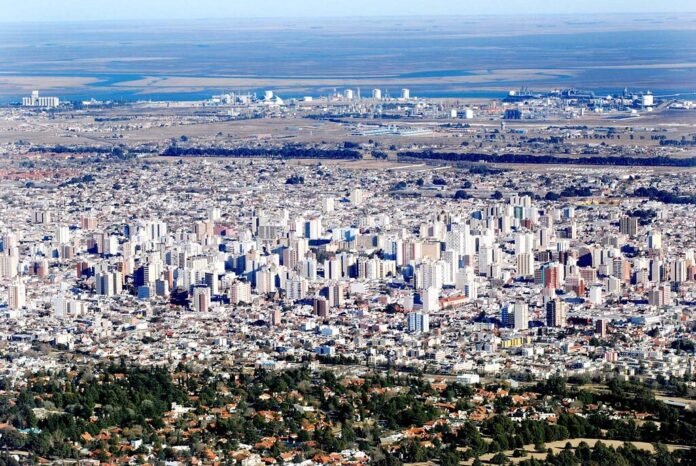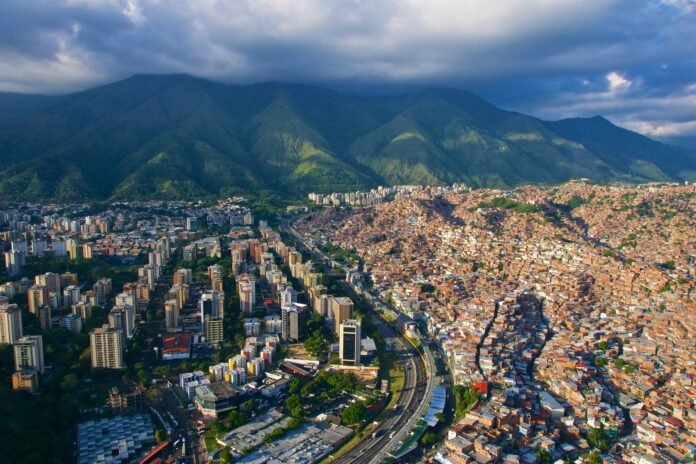Peru’s healthcare system features both public and private insurance, each catering to distinct population groups. Both systems strive to offer medical access but vary in cost, coverage quality, target demographics, and service experience. Here’s a comparison of their differences and similarities.
Differences
1. Funding and Cost Structure
Public health insurance is either free or subsidized. SIS provides low-cost or free care for low-income, uninsured people at public facilities. EsSalud, funded by employers (9% of salaries), covers employed individuals and their families. Private insurance, however, involves monthly premiums paid out-of-pocket. Costs differ by provider and plan, usually from moderate to high. Companies like Rimac Seguros and Cigna Global offer various options, with premiums based on coverage level and facilities.
2. Service Quality and Access
Peru’s public healthcare is accessible but struggles with funding and capacity, resulting in long waits, limited diagnostics, and outdated facilities, especially outside cities. In contrast, private insurance offers access to modern clinics and hospitals, quicker appointments, and more comprehensive services. Companies like Pacífico Seguros and Mapfre Perú are recognized for their partnerships with top hospitals and efficient care.
3. Target Populations
SIS targets economically vulnerable groups, while EsSalud serves formal sector workers, retirees, and their families. Public insurance, therefore, extends more widely among low-income and rural communities. Conversely, private health insurance caters to middle- and upper-income Peruvians and expatriates. Companies like Cigna customize plans for international residents, often featuring emergency evacuation and global provider networks.
4. Choice and Flexibility
Private plans provide more freedom in selecting doctors, hospitals, and international care. Public healthcare limits users to national facilities, often without physician choice and with restricted appointment times.
Similarities
1. Comprehensive Coverage Goals
Public and private healthcare systems strive to offer complete services, covering outpatient and inpatient care, maternity, emergencies, and chronic disease management. Although quality and access can vary, the range of services is generally similar.
2. Emphasis on Urban Centers
Urban areas, especially Lima and major coastal cities, have stronger systems. In contrast, rural and remote regions often get poorer services, regardless of insurance. Public outreach efforts aim to close this gap.
3. Contribution to Universal Health Coverage
Peru boasts a remarkable 91.4% health insurance coverage, thanks to both public and private schemes. This dual system has significantly decreased healthcare exclusion, although service equality remains a challenge.
Top Public Health Insurance Options in Peru
Peru’s public healthcare system is designed to provide universal health coverage through a multi-layered insurance model. Despite significant growth over the last twenty years, the system is still divided among different institutions, depending on employment status, income, and sector. Here are the top five public health insurance options in Peru, explained by cost, services, eligibility, funding, and user satisfaction.
1. Seguro Integral de Salud (SIS)(Official website: https://www.gob.pe/sis )
- Cost: Free for the poor and vulnerable; subsidized for others
- Available Services/Coverage Features: Provides outpatient care, hospital stays, maternity, pediatric services, chronic disease management, and emergency care at public healthcare facilities.
- Open for All or Limited: Available to low-income individuals, the unemployed, and informal workers lacking other insurance. Registration is easy and broadly accessible.
- Core Financial Features: Fully or partially subsidized by the government; no monthly premium for the poorest groups.
- Consumer Satisfaction Score:Users value the cost-effectiveness and crucial access but are worried about extended wait times and limited resources at facilities.
2. EsSalud (Seguro Social de Salud)(Official website: https://www.gob.pe/essalud )
- Cost: No direct cost to the insured; funded through 9% employer payroll tax
- Available Services/Coverage Features: Complete healthcare services cover prevention, specialized care, diagnostics, surgeries, rehabilitation, maternity care, chronic condition management, and access to EsSalud hospitals.
- Open for All or Limited: Limited to formally employed workers, retirees, pensioners, and their registered dependents.
- Core Financial Features: Contributions come from employers (9% of salary); no co-pays for covered services.
- Consumer Satisfaction Score: 7.5/10 – Generally positive for formal workers, but concerns about specialist access delays and bureaucratic issues exist.
3. Health Insurance for the Armed Forces and Police
- Cost: Free or low-cost for members
- Available Services/Coverage Features: Exclusive facilities offer specialized care, preventive services, surgery, trauma care, rehabilitation, and mental health support for high-risk jobs.
- Open for All or Limited: Restricted to active-duty and retired members of the armed forces and national police, as well as their families.
- Core Financial Features: Funded through a combination of government allocations and employer (armed forces/police) contributions.
- Consumer Satisfaction Score: 8.0/10 – High satisfaction due to dedicated, specialized facilities and low wait times.
4. Regional and District Health Insurance Programs
- Cost: Free or low-cost, depending on local government budget
- Available Services/Coverage Features: Basic and emergency services, outpatient treatment, maternal and child healthcare, and health campaigns.
- Open for All or Limited: Open to all residents within the jurisdiction, particularly in underserved rural areas.
- Core Financial Features: Funded by regional and local governments in coordination with the Ministry of Health.
- Consumer Satisfaction Score: 6.5/10 – Vital for rural populations, though infrastructure limitations and staff shortages are common concerns.
5. Community-Based and NGO Health Coverage Programs
- Cost: Often free, subsidized by NGOs or donors
- Available Services/Coverage Features: Targeted preventive services, maternal and child health, immunizations, and treatment of endemic diseases
- Open for All or Limited: Focused on marginalized, indigenous, and remote populations with little or no access to mainstream systems.
- Core Financial Features: Funded by nonprofit organizations, local municipalities, and international aid agencies.
- Consumer Satisfaction Score: 7.8/10 – Highly valued in hard-to-reach areas for cultural sensitivity and personal care, though availability is geographically limited.
Top Private Health Insurance Providers in Peru
Peru’s private health insurance is crucial for delivering faster, better healthcare, especially to city dwellers and expats. Though the public system serves most people, private insurers provide perks like shorter wait times, cutting-edge tech, and top-tier hospitals. Here are the top five private health insurers in Peru, evaluated by cost, service, eligibility, financial structure, and customer satisfaction.
1. Rimac Seguros(Official website: https://www.rimac.com/salud )
- Cost: Monthly premiums start from approximately PEN 180–300 (USD $50–$80), depending on age and plan
- Available Services/Coverage Features: Provides outpatient and inpatient care, diagnostics, maternity services, chronic disease management, and preventive care. Offers access to a wide network of private clinics and hospitals throughout Peru.
- Open for All or Limited: Open to individuals, families, and companies; available for both locals and resident foreigners
- Core Financial Features: Tiered plans with co-pays and deductibles based on the coverage level; discounts for group or family coverage
- Consumer Satisfaction Score: 8.6/10 – Highly rated for hospital access, claim responsiveness, and customer support.
2. Pacífico Seguros(Official website: https://www.pacifico.com.pe/seguros/salud )
- Cost: Premiums typically range from PEN 200–450 (USD $55–$120) per month
- Available Services/Coverage Features: Provides consultations, hospital stays, surgeries, emergency care, dental, and maternity services. Offers telemedicine and health programs.
- Open for All or Limited: Available to all residents, including expats with proper documentation
- Core Financial Features: Flexible plans with options for deductible and co-payment adjustments; employer-sponsored group plans also available
- Consumer Satisfaction Score: 8.4/10 – Popular for innovative offerings like wellness apps and customer-centered digital services.
3. Mapfre Perú(Official website: https://www.mapfre.com.pe/seguros-de-salud/ )
- Cost: Starts around PEN 250/month (USD $65), varies with age, coverage area, and plan features
- Available Services/Coverage Features: Comprehensive coverage includes emergency services, outpatient and inpatient care, preventive screenings, and surgeries. It also offers travel insurance and access to affiliated clinics across the country.
- Open for All or Limited: Open to Peruvians and legal residents; international clients also eligible
- Core Financial Features: Combines health and travel plans; options to tailor coverage based on needs and budget
- Consumer Satisfaction Score: 8.2/10 – Well-received for reliability, broad coverage, and multi-language customer service.
4. La Positiva Seguros(Official website: https://www.lapositiva.com.pe/wps/portal/corporativo/home/proteger/mi-salud/seguros-salud-individual )
- Cost: Affordable plans from PEN 150/month (USD $40); premiums vary based on benefits and age
- Available Services/Coverage Features: Essential and advanced medical services, emergency care, preventive screenings, and surgical coverage are popular with middle-income clients.
- Open for All or Limited: Open to individuals and families throughout Peru
- Core Financial Features: Simplified pricing and plan structure; co-payment model; some plans include dental and vision
- Consumer Satisfaction Score: 7.9/10 – Appreciated for affordability and transparency, though network reach may be limited outside cities.
5. Cigna Global (International Plan)(Official website: https://www.cignaglobal.com )
- Cost: Monthly premiums range from USD $100 to $250+ depending on coverage level and global access
- Available Services/Coverage Features: Provides premium global health insurance covering hospital stays, outpatient services, mental health, maternity, emergency evacuation, and access to hospitals worldwide.
- Open for All or Limited: Open to expatriates, global nomads, and internationally mobile professionals
- Core Financial Features: Tailor your plan with flexible module choices like dental and vision. Enjoy global coverage and yearly deductibles.
- Consumer Satisfaction Score: 9.1/10 – Known for premium service, fast reimbursements, and expat-specific benefits.
READ MORE: Private and public health insurance of Paraguay (Make informed choices)


